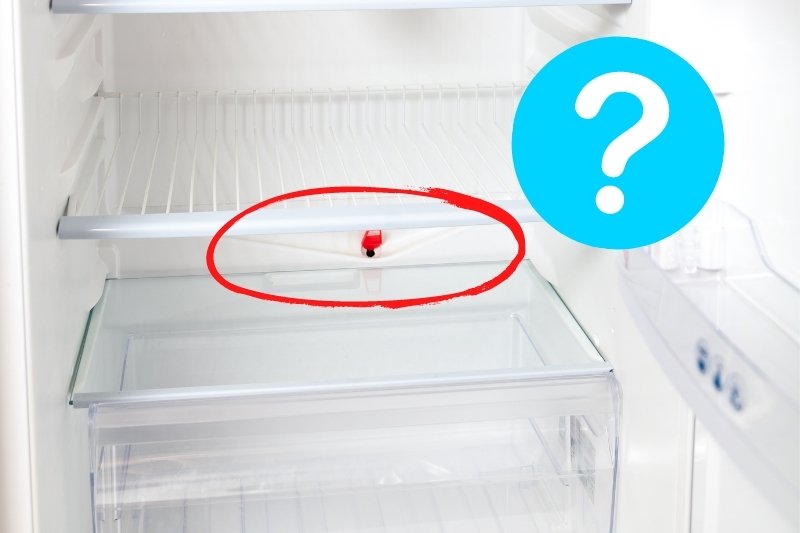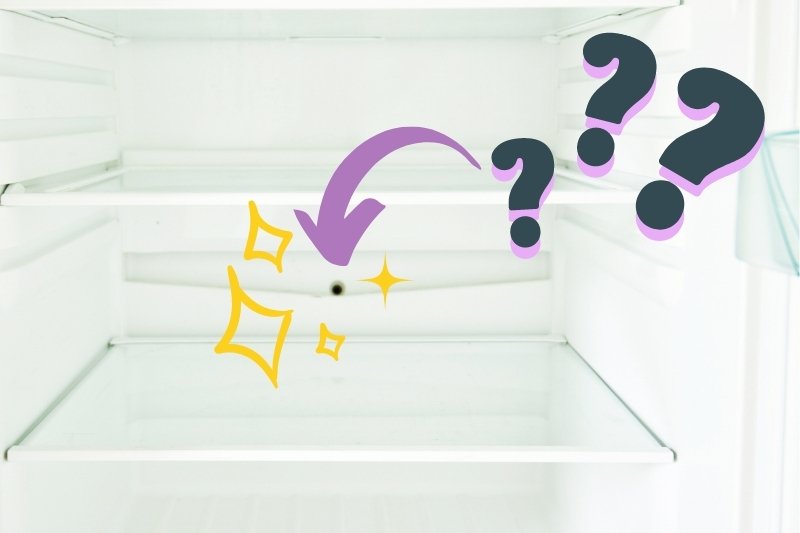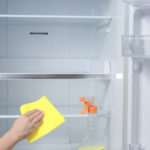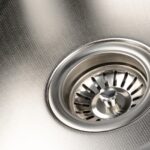If you’re not sure how to clean a fridge drain but you feel it’s time to tackle yours, you’re in the right place.
In this post, we’ll give you a brief introduction to what a fridge drain is, how to tell if it’s clogged and exactly how to clean it in three easy steps. Keep reading to find out how.
What Is a Fridge Drain and How Do I Know if It’s Blocked?
With auto-defrost fridges, the evaporator regularly freezes and defrosts, which can lead to a build-up of condensation at the back of your fridge.
The drain hole is there to catch the water droplets that run down this area, known as the wet wall. The water then flows down a drain tube into a drip tray located above the condenser which evaporates the liquid as it warms.
If the fridge drain becomes blocked by food debris, the water can’t drain away as it should. As a result, you’re likely to find pools of water in the bottom of your fridge or even a layer of ice. There may also be a foul smell from the build-up of grime caused by the blockage.
How to Clean a Fridge Drain in 3 Steps

Luckily, cleaning a fridge drain and its associated parts is relatively straightforward. Start by switching the fridge off at the wall to prevent accidental electric shocks. Move it away from the wall and then follow the steps below to restore your fridge to full working order.
Step 1 – Unblock the fridge drain hole
- Wipe away any pooling water with a cloth, then remove the drawers and bottom shelf to get better access to the fridge drain hole. You’ll find it at the back of your fridge near the bottom.
- Next, lay out some paper towel or an old rag in the bottom of your fridge to catch any debris.
- Take the drain hole cleaning tool that came with your fridge or a cotton bud. Work it around the inside of the hole to remove any gunk that has built up and then wipe the excess away with some paper towel.
- If there’s mould around the hole, use a cotton bud dipped in white vinegar to remove it, then wipe down the outside with a damp cloth.
Step 2 – Unclog the refrigerator drain tube
- After completing your initial clean of the hole, it’s time to move onto the drainage tube. Take your cleaning tool or a pipe cleaner and push it into the hole, taking care not to let go. Move the tool up and down several times to dislodge any blockages, then remove it.
- Next, add 1 teaspoon of bicarbonate of soda to 2 cups of warm water and mix to create a cleaning solution.
- Pour the mixture into a basting syringe with a hose attachment and use it to flush out the pipe from the top. Alternatively, you can use a spray bottle and spray the solution into the hole until you’ve used it all up. This will help push any remaining debris into the drip tray below.
Step 3 – Clean the drip tray

- Finally, you’ll need to empty the drip tray that collects the water and debris at the bottom of the tube. Start by locating the drip tray for your fridge model. It may be located behind the front grill plate or more commonly, at the back of the appliance. Either way, it will be above the condenser unit. If you’re not sure where to find it, check your manual to avoid removing panels unnecessarily.
- When you’ve found the drip tray and removed the panel to access it, place a towel on the floor to protect against any spillages.
- Next, remove the drip tray and empty out the solution and any debris that you just flushed down the tube.
- Before replacing it, wipe out the tray with a damp cloth to remove any remaining residue. If the tray is particularly grimy, spray some white vinegar into it before wiping it and then rinse it out.
- Finally, put the drip tray back in position, close the panel and push the fridge back against the wall.
- Replace the shelf and drawers, switch the appliance back on and you’re good to go!
Repeat each of these three steps every two to three months to clean out your fridge drain and prevent any drain clogs or nasty smells from developing.
You should also avoid pushing food right to the back of your fridge as this can increase the risk of debris falling into the hole and create a barrier to the water draining down the wall.
If your fridge starts to smell even after cleaning out the drain, check out our blog post on the potential causes of a smelly fridge to figure out how best to deal with the problem.
Check out more handy cleaning tips and laundry hacks on our blog!

A proud Yorkshire lass with a love for movies, music and cosy nights in! Once a self-confessed avoider of cleaning, she’s always on the lookout for new ways to make household chores as quick and simple as possible.






